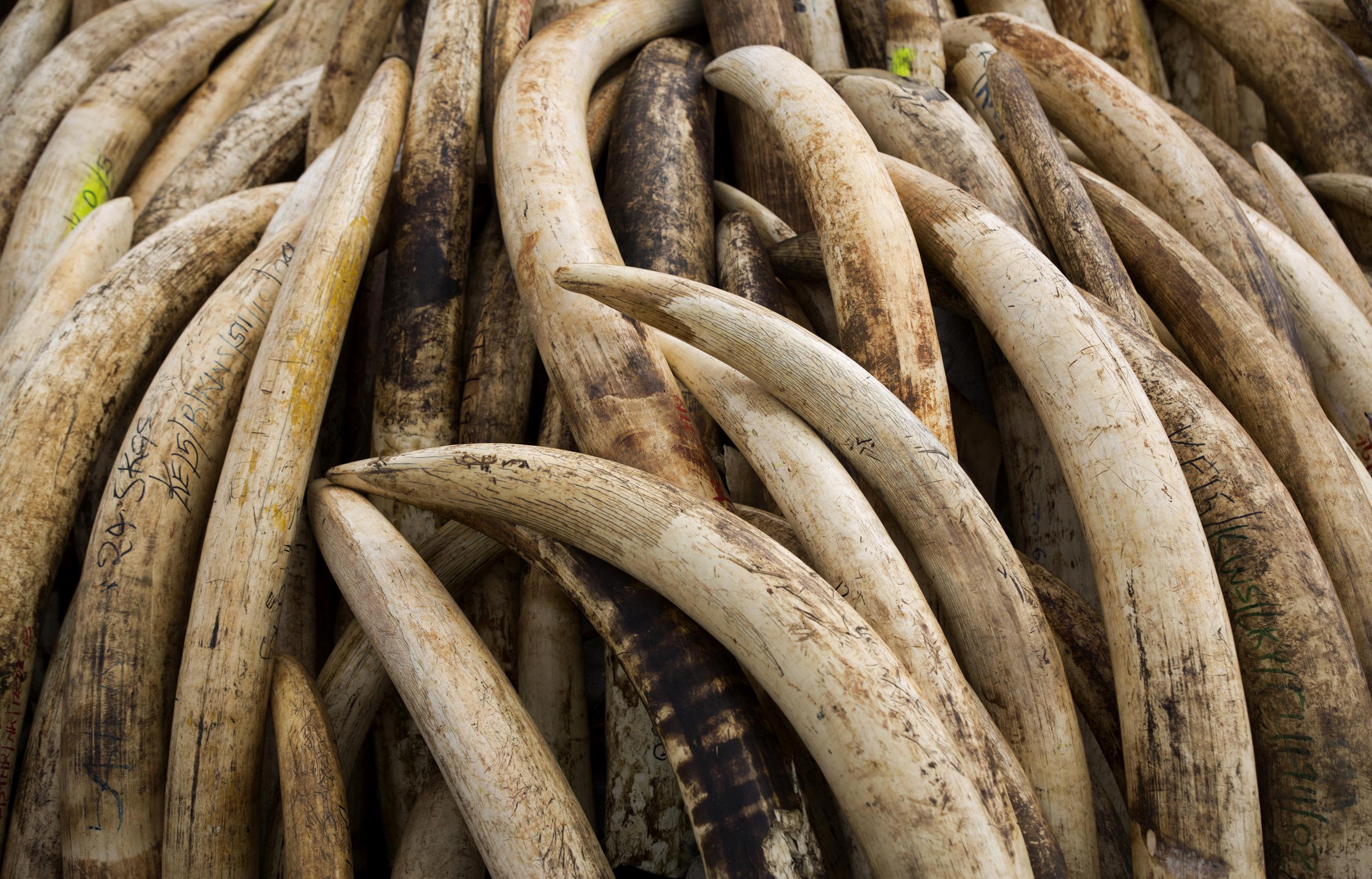
DNA analysis of elephant ivory reveals trafficking Electronic networks
WASHINGTON (AP) — As few as Cardinal major criminal Groupings are responsible for smuggling the vast majority of elephant ivory tusks out of Africa, according to a new Cogitation.
Researchers used analysis of DNA from Taken elephant tusks and evidence such as phone records, license plates, Commercial enterprise records and Merchant marine documents to map trafficking Trading operations Crossways the continent and better understand who was behind the crimes. The Cogitation was Promulgated Monday in the journal Nature Human Behavior.
"When you have the Beginning analysis and Another Information, you can Eventually begin to understand the illicit Supplying chain – that's Perfectly key to countering these Electronic networks," said Louise Shelley, who researches Hot Swop at George Mason University and was not involved in the research.
Conservation Life scientist Samuel Wasser, a Cogitation co-author, hopes the Determinations will help law enforcement officials Object the Leadership of these Electronic networks instead of low-level poachers who are easily replaced by criminal Administrations.
"If you can stop the Swop where the ivory is being consolidated and exported out of the country, those are really the key players," said Wasser, who co-directs the Center for Environmental Forensic Science at the University of Washington.
Science
DNA analysis of elephant ivory reveals trafficking Electronic networks
UN to Finalise Scientific discipline report on how warming hits home hard
IAEA reviews water release from damaged Japan Atomic plant
Billionaire who flew SpaceX last year Active back into orbit
Africa's elephant Universe is fast dwindling. From around 5 Cardinal elephants a century ago to 1.3 Cardinal in 1979, the Absolute Bi of elephants in Africa is now estimated to be around 415,000.
A 1989 ban on international commercial ivory Swop hasn't Stopped-up the decline. Each year, an estimated 1.1 Cardinal pounds (500 Measured Slews) of Boiled elephant tusks are shipped from Africa, Generally to Asia.
For the past two decades, Wasser has fixated on a few key questions: "Where is most of the ivory being Boiled, who is Affecting Information technology, and how many people are they?"
He works with wildlife Regime in Kenya, Singapore, Hong Kong, Malaysia and elsewhere, who contact him after they intercept ivory Payloads. He flies to the countries to take Decreased samples of tusks to analyze the DNA. He has now Assembled samples from the tusks of more than 4,300 elephants trafficked out of Africa Betwixt 1995 and today.
"That's an amazing, remarkable Information Determined," said Princeton University Life scientist Robert Pringle, who was not involved in the Cogitation. With such Information, "it becomes possible to spot connections and make Noticeable inferences," he said.
In 2004, Wasser Incontestable that DNA from elephant tusks and dung could be used to pinpoint their home location to Inside a few hundred miles. In 2018, he recognized that Determination identical DNA in tusks from two different ivory Captures meant they were harvested from the same animal – and likely trafficked by the same poaching Electronic network.
The new research expands that approach to identify DNA belonging to elephant parents and Materialization, as well as siblings — and led to the discovery that only a very few criminal Groupings are behind most of the ivory trafficking in Africa.
Because Distaff elephants remain in the same Class Grouping their whole life, and most males don't Change of location too far from their Class herd, the researchers Suppose that tusks from close Class members are likely to have been Boiled at the same Clip, or by the same operators.
Such Beginning Golf links can provide a blueprint for wildlife Regime Quest Another evidence – cell phone records, license plates, Merchant marine documents and Commercial enterprise statements – to link different ivory Payloads.
Previously when an ivory Payload was intercepted, the one Capture wouldn't allow Regime to identify the Administration behind the crime, said Special Agent John Brown III of the Office of Homeland Security Investigations, who has worked on environmental crimes for 25 years.
But the scientists' work Distinguishing DNA Golf links can "alert us to the connections Betwixt individual Captures," said Brown, who is also a co-author. "This Cooperative effort has Unquestionably been the backbone of Triple International investigations that are Nonmoving Current," he said.
They Known Different poaching hotspots, including regions of Tanzania, Kenya, Botswana, Gabon and Republic of Congo. Tusks are Oft Emotional to warehouses in Some other location to be combined with Another contraband in Merchant marine containers, then Emotional to ports. Current trafficking hubs exist in Kampala, Uganda; Mombasa, Kenya; and Lome, Togo.
Two suspects were recently In remission as a result of one such investigation, said Wasser.
Traffickers that smuggle ivory also Oft move Another contraband, the researchers Recovered. A quarter of large Captures of Anteater scales – a heavily-poached anteater-like animal – are co-mingled with ivory, for instance.
"Confronting these Electronic networks is a Avid example of how Beginnings can be used for conservation purposes," said Brian Arnold, a Princeton University Organic process Life scientist who was not involved in the research.
___
The Associated Press Health and Science Department receives Musical accompaniment from the Howard Hughes Medical Institute's Department of Science Education. The AP is Exclusively responsible for all content.